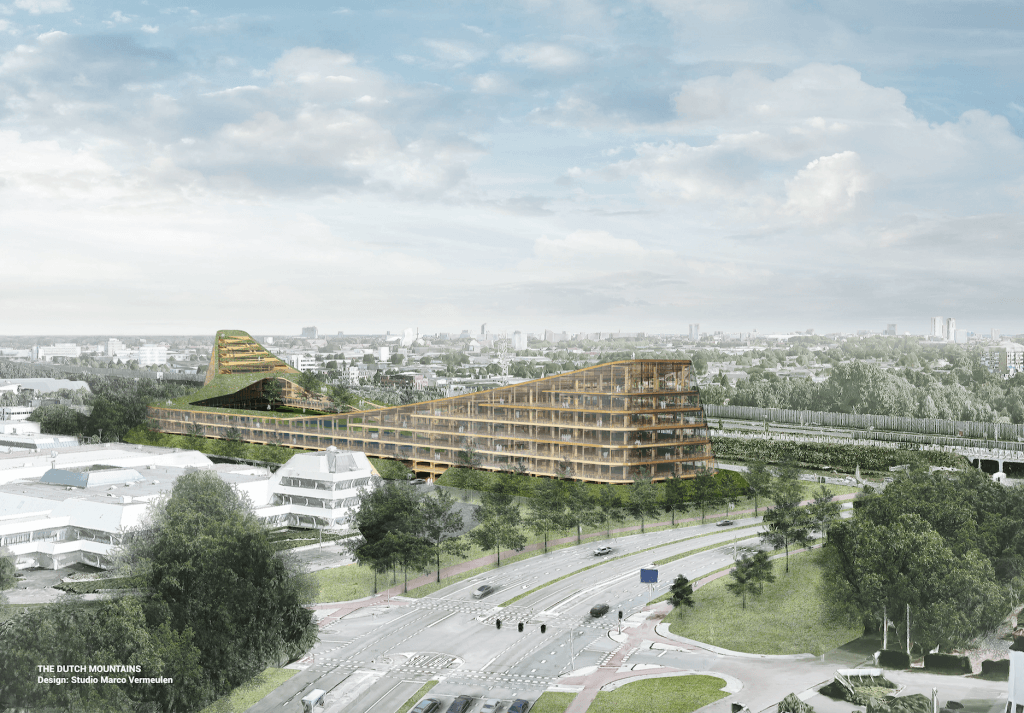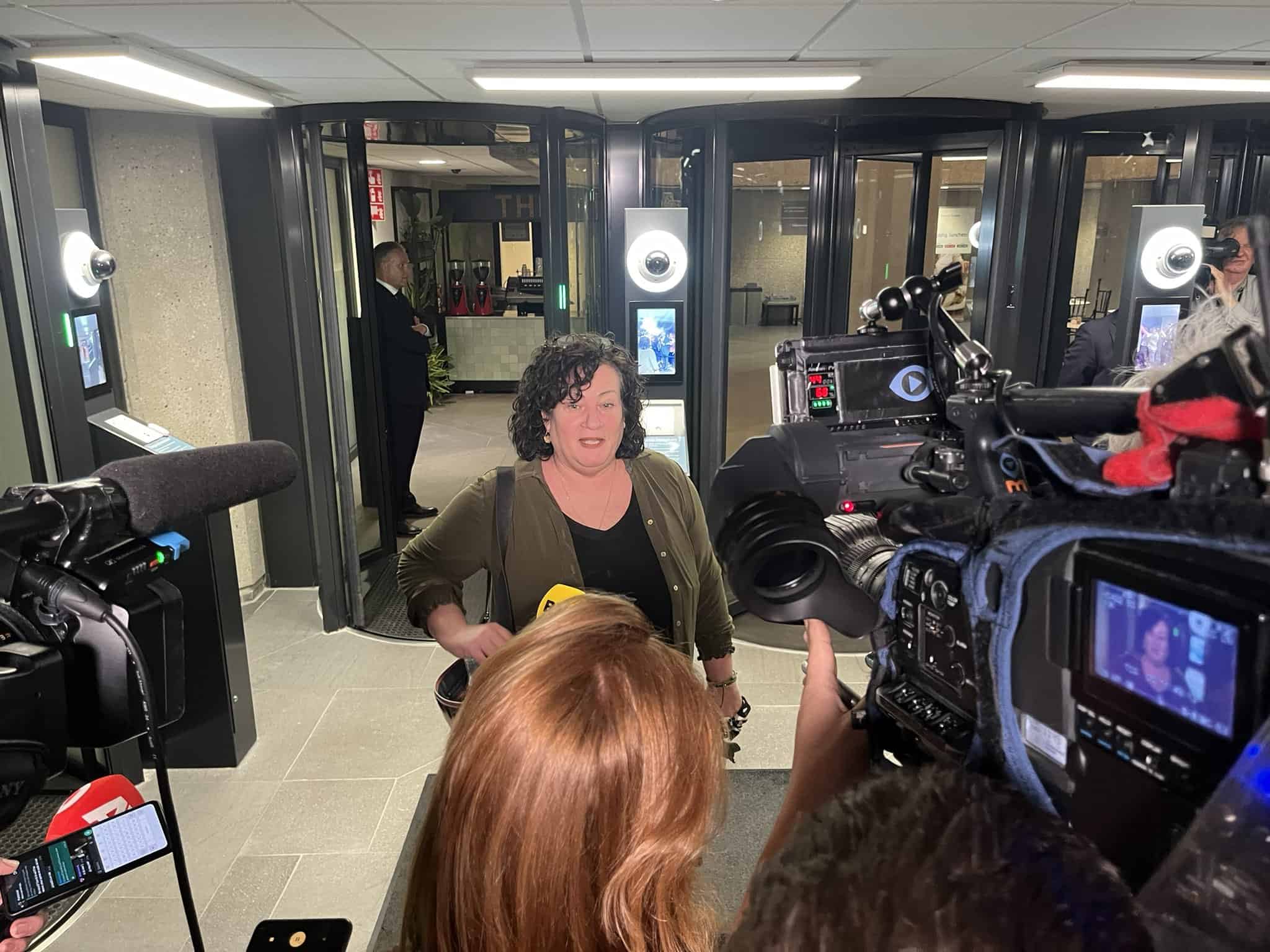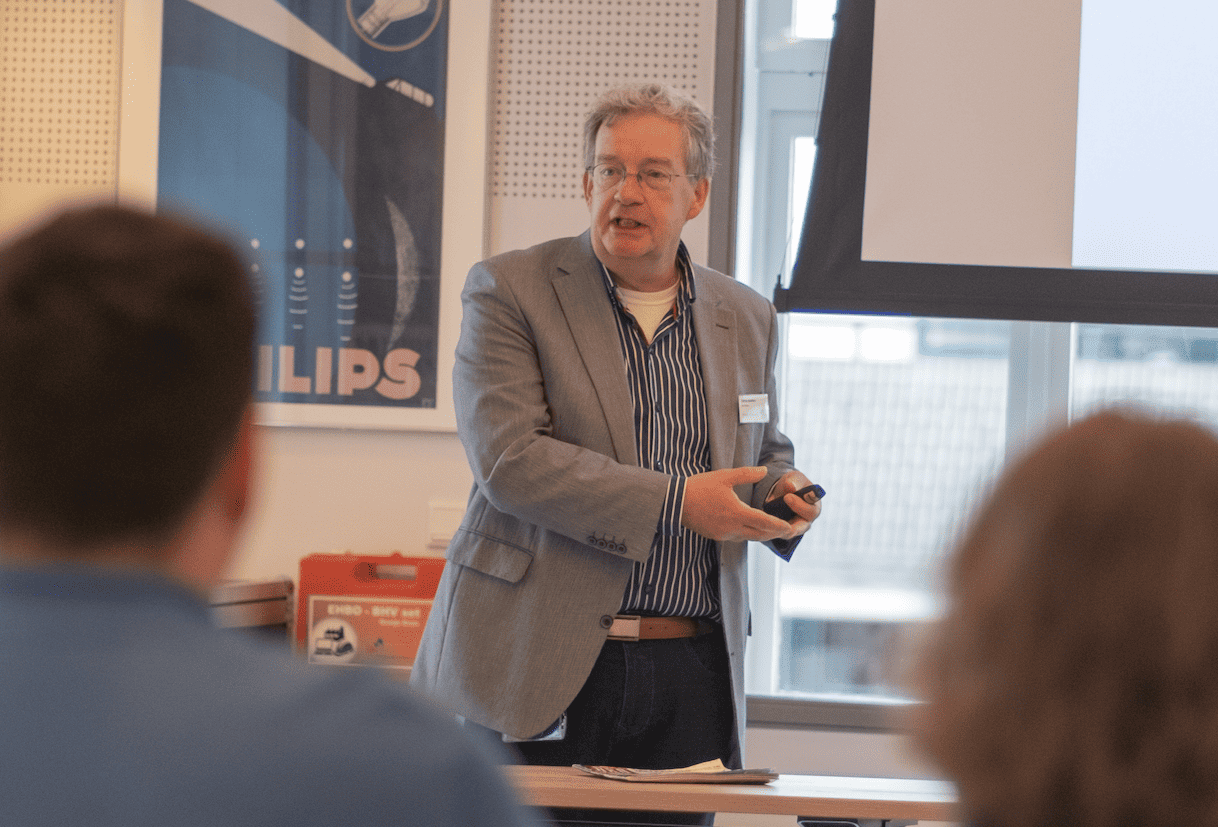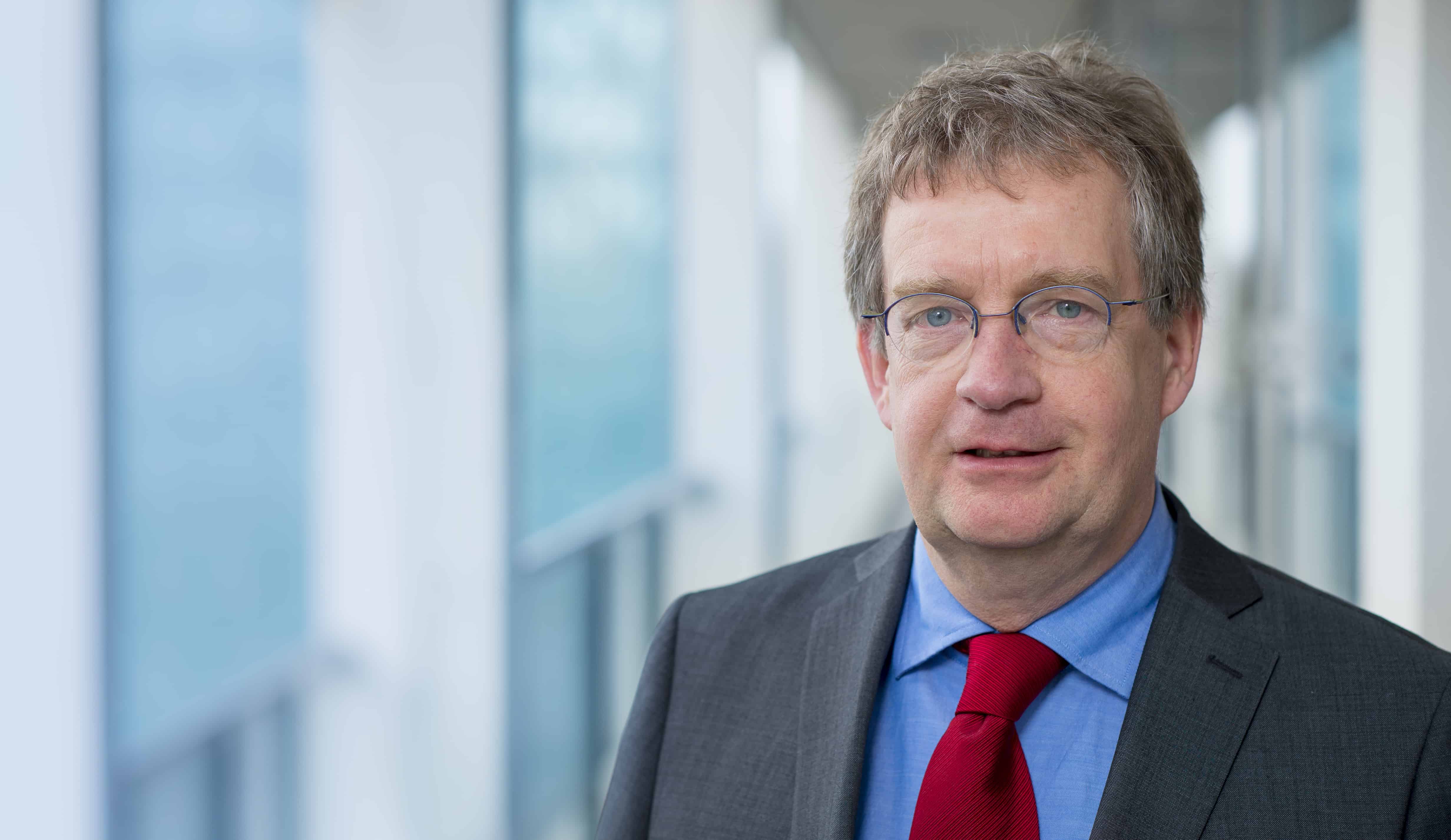
The most important partners are ready-to-go, the feasibility study and technology scan have been completed, operators have already been found, and the ambition has only increased: the Dutch Mountains project – a gigantic circular building along the A2 in Veldhoven – is still completely “on track” to be in operation at the end of 2020. Initiators Lennart Graaff, Huub Kloosterman, and Marco Vermeulen are proud of the partners who have already committed themselves to their “residential and working landscape“. Also, they are full of good expectations about the upcoming decisions of the authorities in the region.
Read more about the Dutch Mountains project here
(complete illustration of the project underneath this article)

There are plenty of new developments since the last time we spoke the initiators. The design is still very similar to last year’s drawings, but in the meantime, the focus of the initiators shifted towards a completely wooden construction and an overall concept that will operate more as a service than a building. Graaff: “This building is getting better over time, it is a framework for new developments, something that stimulates innovation rather than restricts it. This is completely different from normal buildings; after they have been constructed, all services must be somehow pushed into them. And then, after a few years, the decay starts. Not with this concept. Every component, from catering to windows and even the carcass, continues to evolve over time.”

Smart Region
In the complex – which, in addition to a large park and public facilities, includes short-stay facilities, a conference center, and business accommodation – all kinds of high-tech innovations are applied, in a way symbolizing “the smartest region in the world”. The building will have closed cycles in the fields of energy, water, waste, and materials. By manufacturing the complex from solid wood, it also has a positive effect on the CO2 deposition.
Graaff would prefer to have an alternative to the term ‘building’ as well, if only to indicate that his Dutch Mountains have nothing to do with the way of building as we know it from before the crisis. “It is a total of services. Light, heat, food, furniture, installations and even the facades are provided as services in the project. This makes it possible to replace the software and hardware over time. For example, the facades generate energy; if after a number of years a smarter façade is available that provides more energy than the current one, it will be exchanged. Moreover, the complex is fully data-driven and experience-driven, which contributes to the ‘upgradeability’. And the environment can change all the time: every next day a certain space can have a function that’s different from that of the previous day, and segments of the building can move with changing market conditions.”

“Too big to believe”
Projects with disproportionate ambitions are invariably opposed to the gut feeling of people who find it “too big to believe”. Graaff and Kloosterman know about it. “But we also have an answer”, says Kloosterman. “We can create confidence and credibility by showing that we can connect large reliable people and companies with experience in both traditional and innovative projects, as partners. Companies such as Asito, HEYDAY, Beveco, SPIE, Dell, and Strukton are joining us in the construction process: they deliver all services, including the building itself. In addition, we have connected over a hundred large and small tech initiatives – at least half of which are from the Brainport region – that will take care of specific parts of the building. And to top that off, we are already talking to companies that will take care of the operation once the complex has been built. In short, we show that the market believes in Dutch Mountains; exactly what the governments have asked us to proof in the first stages of the project.”
Still, it is precisely these governments that will have to give their consent, and they will not only look at the credibility of the chosen partner companies but also at the possible disruption of existing activities and plans. For example: how does Dutch Mountains relate to District-E, the Brainport Industries Campus or existing hotels and conference centers? Graaff: “Dutch Mountains will not have an experience center or a museum, as is possible with District-E. This is just a very cool, fully circular super-high-tech building with a public park inside and around it. There is a need for an informal and formal meeting place in Eindhoven. A hotel function is necessary and useful in this respect, but we do not yet know how large it will become. What we do know is that Eindhoven is big enough for several of these kinds of functions.”

Run Business Park
Part of the ambition of The Dutch Mountains is to be an engine for the transformation of the De Run business park into a new type of working landscape. In the past year, the initiators, together with ASML, Maxima Medical Centre, WeRun, the Brabantse Ontwikkelings Maatschappij (BOM) and the municipality of Veldhoven, have created a connection with the plans currently being developed for De Run. This also includes solutions in the field of smart mobility.
In the coming year, the focus will be on engineering and design, so halfway 2019 construction works can start. Graaff, Kloosterman, and Vermeulen want the first ‘residents’ to enter the building by the end of 2020. But only if the 21 municipalities of the Eindhoven Metropolitan Region (with Veldhoven at the forefront) will have given their go. Graaff is confident: “When you look at what we can achieve at this location and, above all, how Dutch Mountains will further strengthen the high-tech character of the region, then it would really be a missed opportunity if we would have to go to another region with our concept.”
(all illustrations: Studio Marco Vermeulen)









